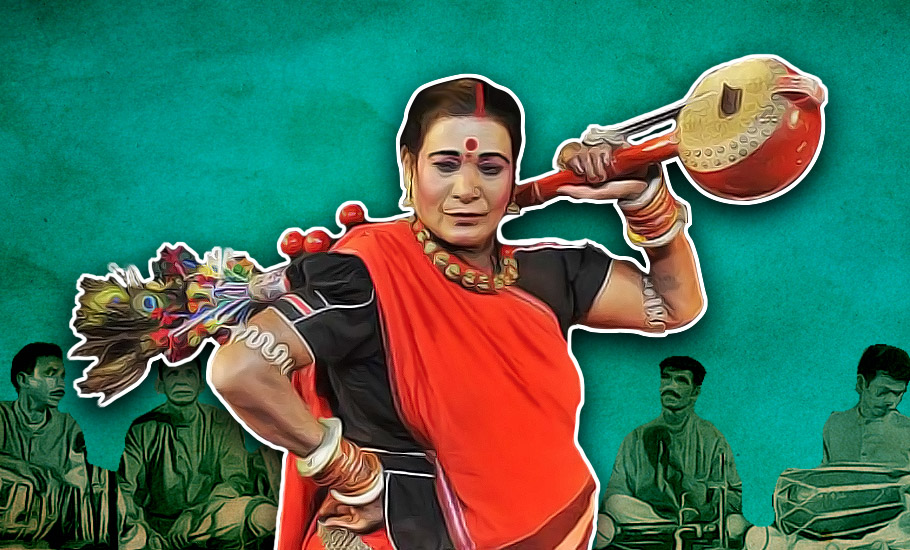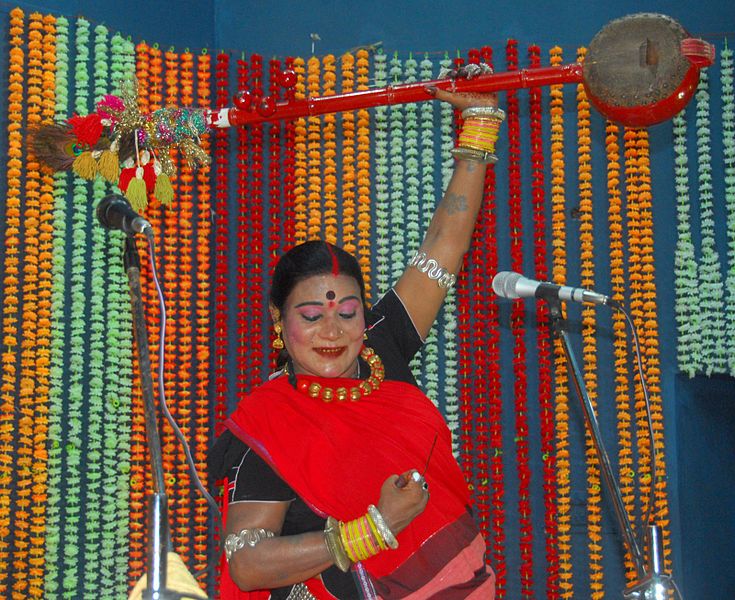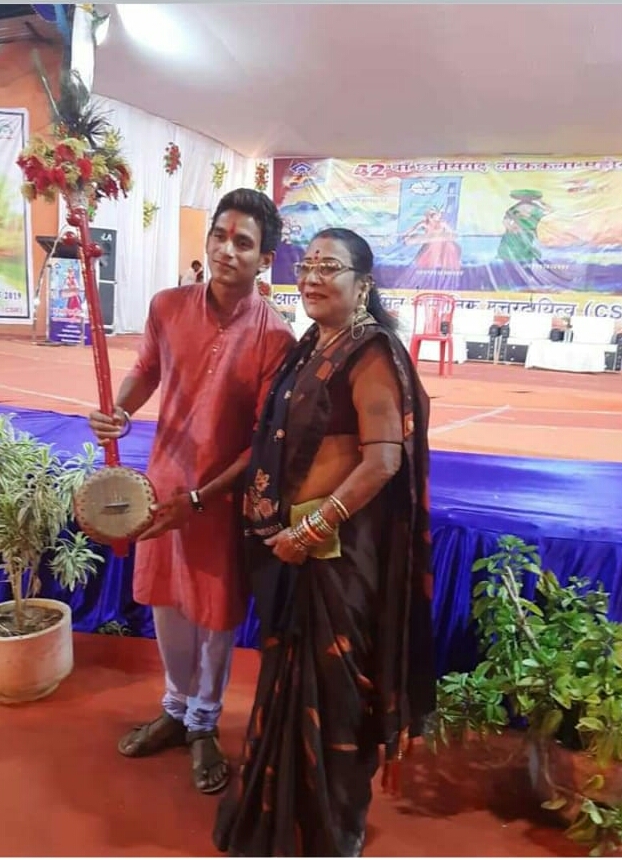
- Home
- News
- Analysis
- States
- Perspective
- Videos
- Education
- Entertainment
- Elections
- World Cup 2023
- Features
- Health
- Business
- Series
- Economy Series
- Earth Day
- Kashmir’s Frozen Turbulence
- India@75
- The legend of Ramjanmabhoomi
- Liberalisation@30
- How to tame a dragon
- Celebrating biodiversity
- Farm Matters
- 50 days of solitude
- Bringing Migrants Home
- Budget 2020
- Jharkhand Votes
- The Federal Investigates
- The Federal Impact
- Vanishing Sand
- Gandhi @ 150
- Andhra Today
- Field report
- Operation Gulmarg
- Pandemic @1 Mn in India
- The Federal Year-End
- The Zero Year
- Premium
- Science
- Brand studio
- Home
- NewsNews
- Analysis
- StatesStates
- PerspectivePerspective
- VideosVideos
- Entertainment
- ElectionsElections
- Sports
- Loading...
Sports - Features
- BusinessBusiness
- Premium
- Loading...
Premium

Nurtured by Teejan Bai, Pandavani waltzes into the future
With Teejan Bai, a new lease of life would be given to the folk art form called Pandavani as the unsung saga of the folk artist is going to be picturised on the silver screen.

In a remote tribal setting in Ganiyari village, some 15 kilometres from the steel city of Bhilai in Chhattisgarh, a century-old tribal folk tradition is being fostered for posterity. The village stirs up every day with the recalling of tales from Hindu epics Mahabharata in a unique theatrical style that involves narration, singing, music, dance and satire. “Aur Hasna Nagari ma ikkis...
In a remote tribal setting in Ganiyari village, some 15 kilometres from the steel city of Bhilai in Chhattisgarh, a century-old tribal folk tradition is being fostered for posterity.
The village stirs up every day with the recalling of tales from Hindu epics Mahabharata in a unique theatrical style that involves narration, singing, music, dance and satire.
“Aur Hasna Nagari ma ikkis bhai Kanvara…,” narrates a guttural female voice, with her students in attendance.
For the uninitiated, Hasna Nagari referred here is Hastinapur, the kingdom of Kauravas, termed Kanvara in this narration. Another noticeable deviation is Kanvaras were 21 brothers and not 100 as in the original classic.
This art of narrating tales of Mahabharata with a typical tribal essence and divergence is called Pandavani, the tales of Pandavas, the five brothers who form the main characters in the epic.
This folk tradition has now become synonymous with its greatest ever exponent Teejan Bai. Inspired by her, many in her native Ganiyari and surrounding villages have now taken to Pandavani. She has till date trained 270 students, including her grandson Saurabh Pardhi to master the art.
To promote the folk tradition, the Culture department of Chhattisgarh government now regularly organises workshops at government-run schools and colleges and cultural centres. A select few from these workshops are again picked up by Teejan Bai for further grooming under her tutelage at her village centre.
Manju Ramteke is one such student, who first met Teejan Bai at a workshop at Mahant Ghasidas Memorial Museum, Raipur.
“She liked my performance and asked me to train with her to further hone my skills at her village Ganiyari in Durg district,” Manju says.
For women to perform Pandavani was a taboo until Teejan Bai brought in the change and set a trend.
At 12, she was married off, and soon divorced and excommunicated for daring to perform a musical folk art unique to Chhattisgarh called Pandavani that was until then an exclusive domain of male performers.
Not to be deterred, she built herself a small hut and started living on her own to pursue her love for music. Today, she is the biggest ever exponent of the folk tradition, the glass ceiling of which she had dared to break.
This film-like journey of rejection to fame of this veteran exponent of Pandavani will soon be traversed by Bollywood actor Vidya Balan in a yet-to-be named movie.
The film, a biopic on Teejan Bai, will be produced by Aaliya Siddiqui and will also have Amitabh Bachchan and Nawazuddin Siddiqui in different characters, says Manharan Sarva, the personal secretary of Teejan Bai.

Aaliya Siddiqui called on Teejan Bai last December to give final shape to the script of the movie, which is expected to give a fresh lease of life to the dying art form.
Pandavani is a popular folk tradition of Chhattisgarh wherein the lead performer impersonates characters of ancient Indian epic Mahabharata through singing and enacting.
Making her own way
Teejan Bai was born to a ‘Pardhi’ tribe at Ganiyari village in Durg district of Chhattisgarh on August 8,1956.
She was initiated to the folk tradition by her maternal grandfather Brijlal Pradhi, whose character will be played by Amitabh Bachchan in the biopic.
Teejan Bai performed in public for the first time at the age of 13 in a neighbouring village Chandrakhuri in Durg district of undivided Madhya Pradesh for ₹10.
It was the beginning of a turbulent journey that was to take a glorious turn, bringing in accolades for Teejan Bai from across the country and abroad.
The turning point in her over six-decade-long career came, when renowned theatre personality from Madhya Pradesh Habib Tanvir noticed her talent.
He gave her an opportunity to perform before the then Prime Minister Indira Gandhi when she was visiting Bhopal, the capital of undivided Madhya Pradesh of which Chhattisgarh was then a part.
That one performance catapulted her to fame. Soon, she was bombarded with invitations to perform in various parts of the country and abroad.
In recognition of her contribution towards promoting the ancient folk tradition, she was awarded Padma Shri in 1987, Padma Bhushan in 2003 and Padma Vibhushan in 2019 by the Government of India. She also received the Sangeet Natak Academy Award in 1995.
On Pandavani
Pandavani has two variations Vedamati and Kapalik.
In the Vedmati genre, the performer in a sitting position narrates the tales from the Mahabharata written by Sabbal Singh Chauhan’s in the lyrical verse-format.
Kapalik is a more free-flowing style of narration where the performer is free to improvise. The entire performance is done standing by the lead performer supported by an orchestra playing Harmonium, Tabla, Dholak and Manjira. The lead performer strums the tambura (stringed musical instrument) to string her tale.
The performance involves conversations between Mahabharata characters played by the lead performer simultaneously switching from one role to another with élan.

Sixty-five-year old Teejan Bai is the exponent of Kapalik form, sprinkling her narratives of Mahabharata stories with contemporary issues such as social prejudices.
For instance, in Draupadi’s wedding, an episode often performed by Teejan Bai, she fits into the role of Draupadi and Krishna alternatively, carrying out conversations in a lyrical, but playful manner, often punctuated with rustic jokes and caste and gender specific references.
“I took to Kapalik style as it provides me more freedom to think and improvise to make the story my own,” she says.
The story narration in her husky voice gets an added dimension with her facial expression and body gestures.
Planning for posterity
With experience and age, her performance has only become better and better. Even at this age, as she holds aloft her colourfully decorated tambura, the stage comes alive with an unmistakable verve.
But then she is not getting younger. So it is natural to contemplate the future of the ancient tradition after her.
“Teejan Bai is par excellence and that is why no other artist is shining like her today but the show will go on as we have talented artists like Ritu Verma, Usha Barle and others to take over,” vice-chancellor of Indira Kala and Sangeet Vishwavidyalaya (IKSV) Mokshda Chandrakar says.
Further, to popularise and promote the tradition, professional courses on folk arts would be started in IKSV soon based on the guru-shishya tradition, Chandrakar says.
“Because of their originality that can have a long-lasting impact on the recipients, the folk tradition will continue to survive,” the VC opines with a sense of optimism.
Teejan Bai herself is grooming new talents to take forward the ancient tradition, which according to her could be as old as Mahabharata itself.
“Among her students her grandson Saurabh Pardhi and Manju Ramtek from Kanker are extremely talented,” says her assistant Sarva.
Apart from them, another student of her Seema Ghosh from Kolkata is experimenting with the art form, narrating the tales in Bangla while retaining the original Pandavani style, he says.
Surely, a new lease of life would be given to the art form as the unsung saga of the folk artist is going to be picturised on the silver screen, Chandrakar adds.

